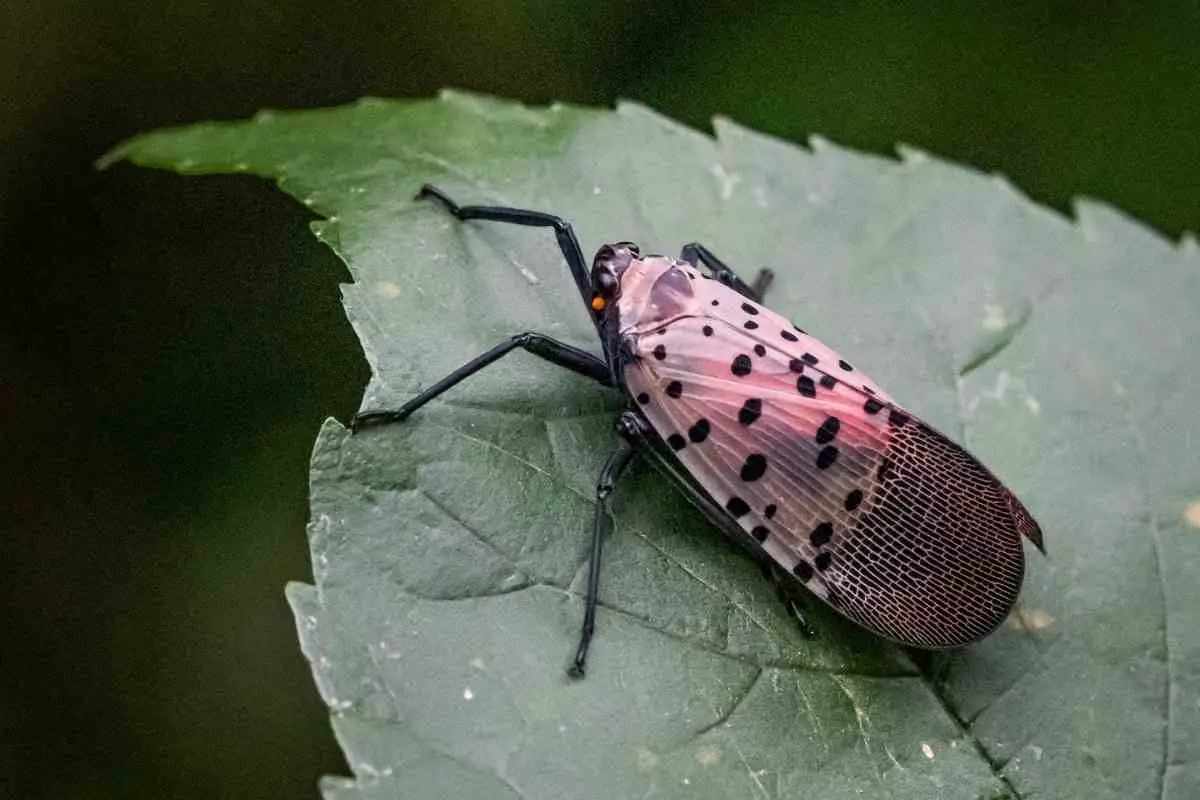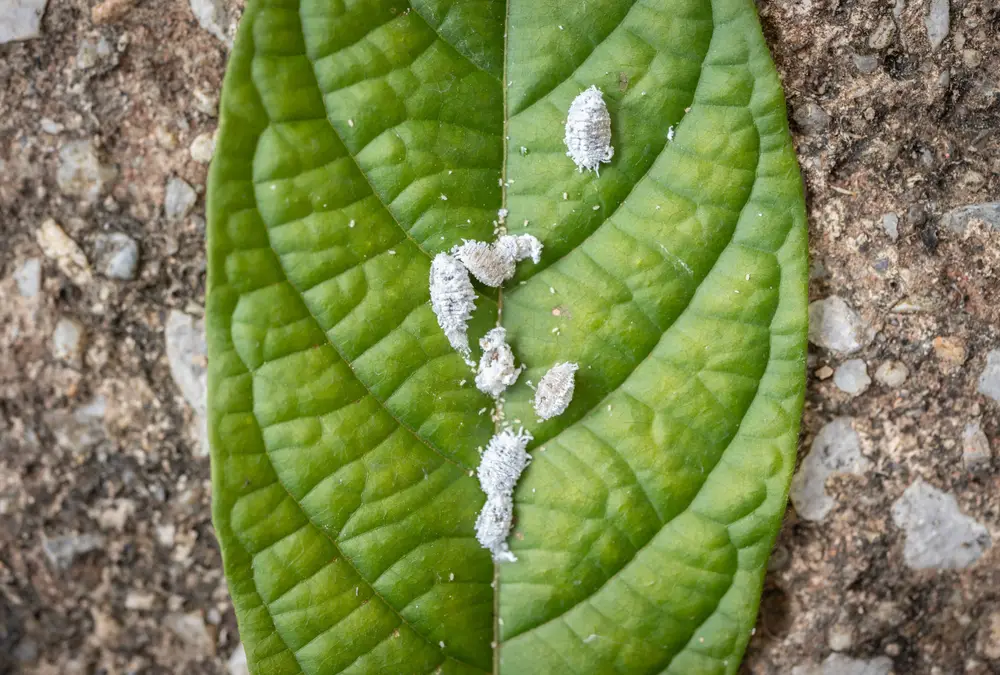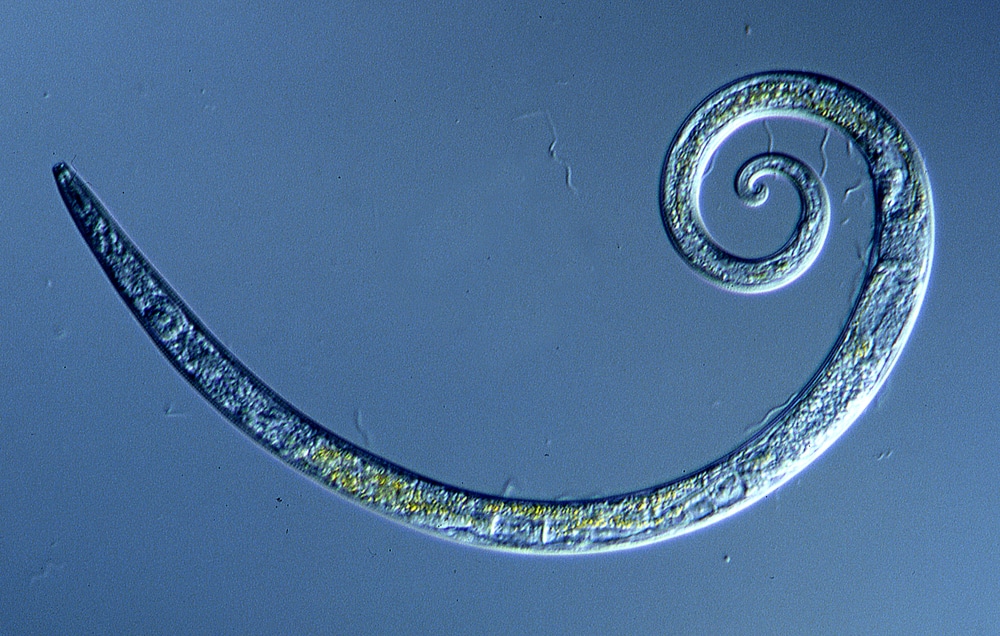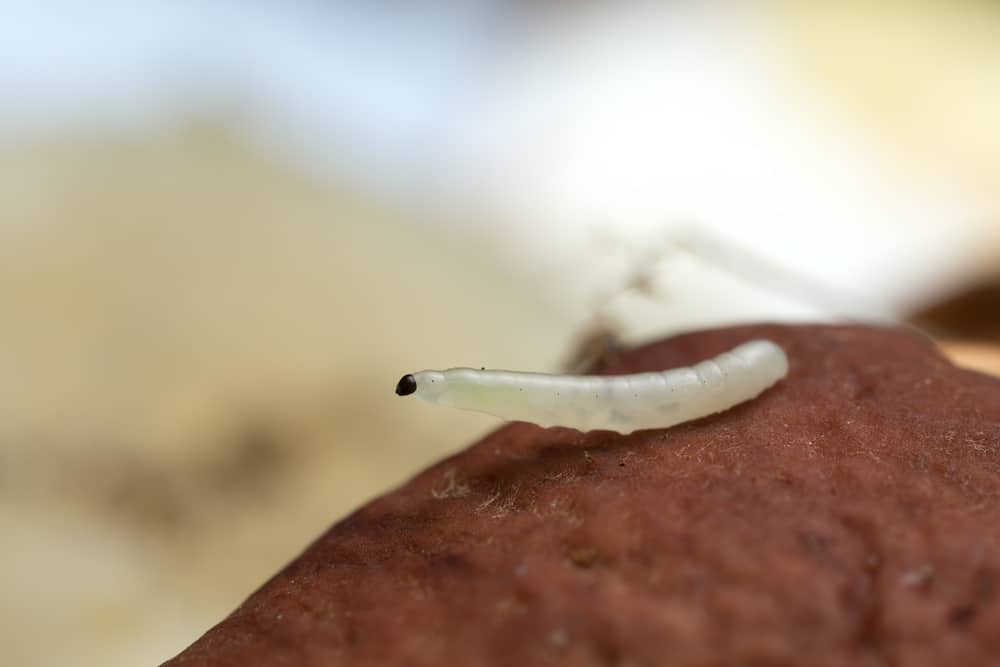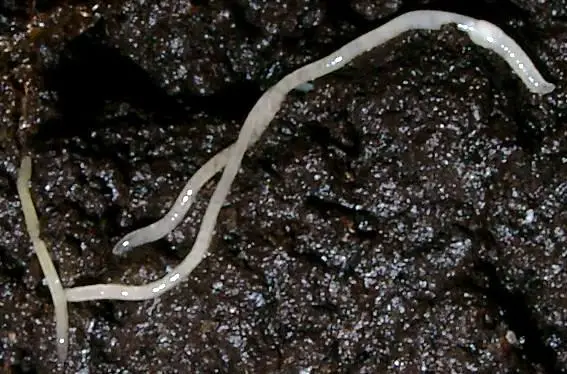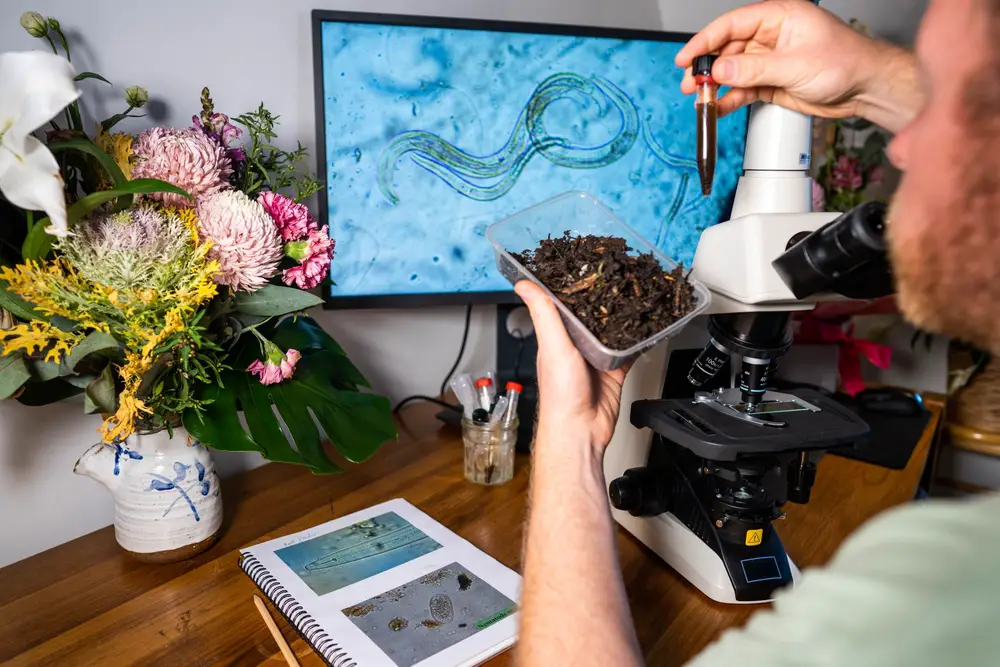The Spotted Lanternfly is an invasive species found in parts of the U.S. whose origin is China.
It was first discovered in Pennsylvania in 2014 and has since spread to other states.
The planthopper is believed to have first landed here through shipments from China.
This meant that the Lanternflies did not have native predators in the U.S., making their invasion uncontrollable at first.
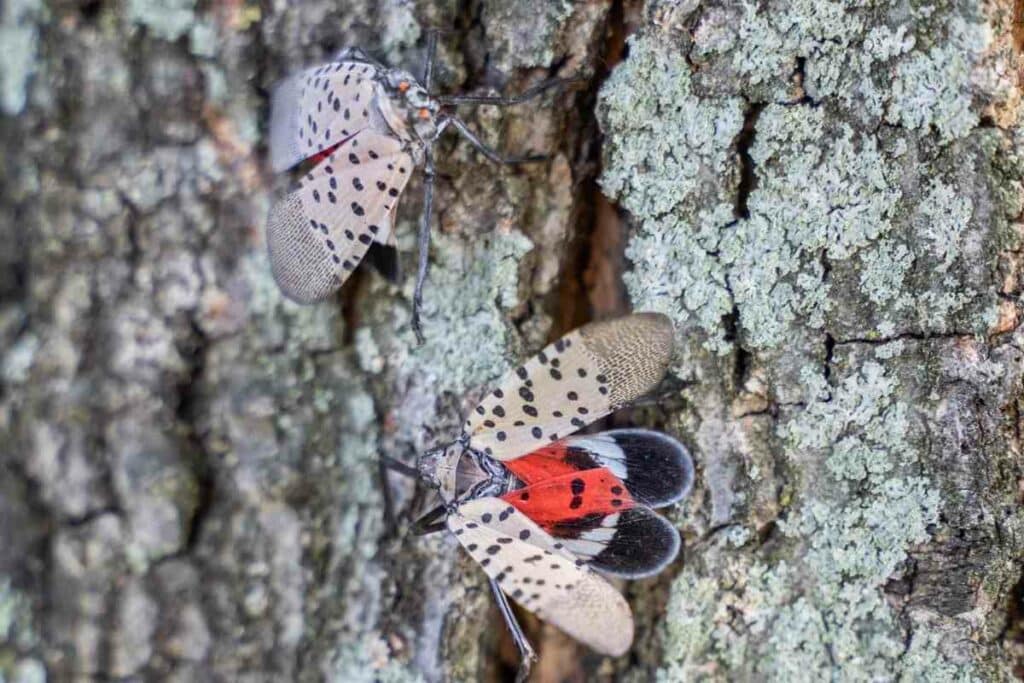
Over time, entomologists have studied these planthoppers and found a few predators here that could help.
So what eats Spotted Lanternflies?
At the top of the list is chicken and praying mantis. Other bird predators include catbirds and cardinals. On the insect list, there are garden spiders, wheel bugs, ants, hornets, and yellowjackets. Other animals that eat Spotted Lanternflies include Koi fish, ducks, snakes, and green frogs.
Spotted Lanternfly Predators
Since their arrival, Spotted Lanternflies have caused significant damage to different tree species, ornamentals, and shrubs.
Let’s look at how these predators are helping get rid of these annoying pests.
Praying Mantis
Praying mantis seems to be the arch enemies of Spotted Lanternflies.
It helps that they are found in the same areas.
The bright green color of the praying mantis makes an excellent camouflage when it’s sitting or hanging on a leaf.
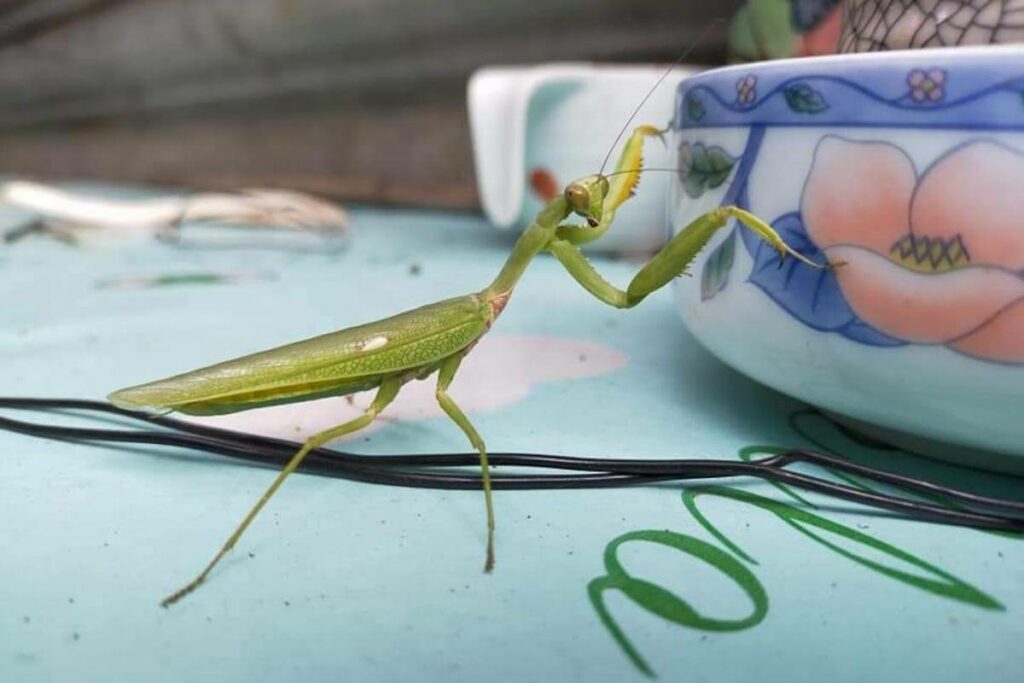
This makes it difficult for a Lanternfly to notice it while it’s busy sucking sap.
The praying mantis is one patient predator, taking its time to wait for the prey to get closer.
Once it’s ready to make its move, it does so swiftly, grabbing the pest using its spiked front legs.
It eats the Lanternfly with its sharp mandibles, which efficiently cut through the flesh. Both adult Lanternflies and nymphs are subject to these attacks.
Did You Know? The chances of the Lanternfly escaping the praying mantis are low. This is because it typically hops more than it flies.
Chicken
Residents of areas where Spotted Lantenflies are found have reported that chickens indeed feed on them.

The chickens peck at them with their beaks and proceed to swallow them in one gulp for larger chickens.
The smaller chickens can also prey on the nymphs in the same way.
That said, chickens seem to prefer feeding on Lanternflies that feed on other trees over the tree of heaven.
This could be because the sap from the tree of heaven is bitter, affecting the taste of the Lanternflies.
Garden Spiders
Garden spiders are also a common predator of the Spotted Lanternfly due to the shared environment.
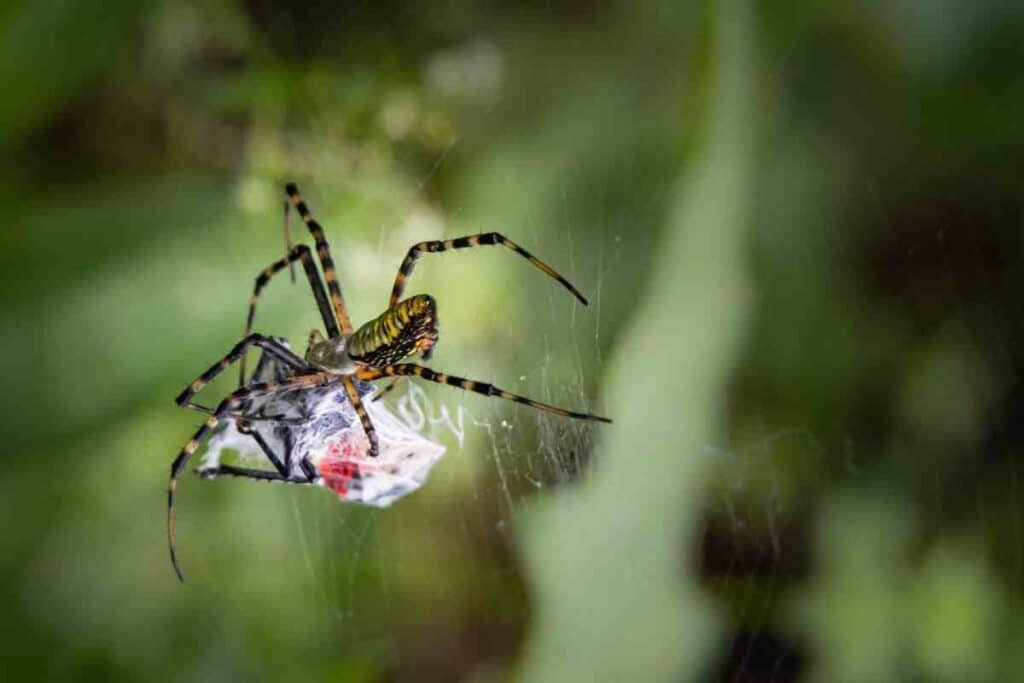
The spiders catch the bugs using their circular webs.
Once they have succeeded, they inject the Lanternflies with venom, which paralyzes them.
Afterward: They wrap them in silk to eat them right away or later on.
Wheel Bugs
Wheel bugs, also known as “assassin bugs,” are also doing their part in eliminating the Spotted Lanternflies.
They also prey upon insects such as moths, cabbage worms, Japanese beetles, and caterpillars.

This predatory nature is helpful to the trees, shrubs, and meadows where the bugs are found.
The wheel bug captures the spotted Lanternfly using its front legs, which continue to hold it until dead.
The wheel bug then eats the planthopper by draining its insides using its beak, which pokes through the flesh.
Garter Snakes
Snakes are mostly known to feed on rodents and fish, but they also feed on insects.

Garter snakes have been spotted preying on the Spotted Lanternflies.
They capture them with their jaws and swallow them whole just like any other prey.
The snakes can easily find the Lanternflies in gardens and other green areas.
Gray Catbirds
Catbirds set up their habitats in dense thickets, bushy areas, and gardens.
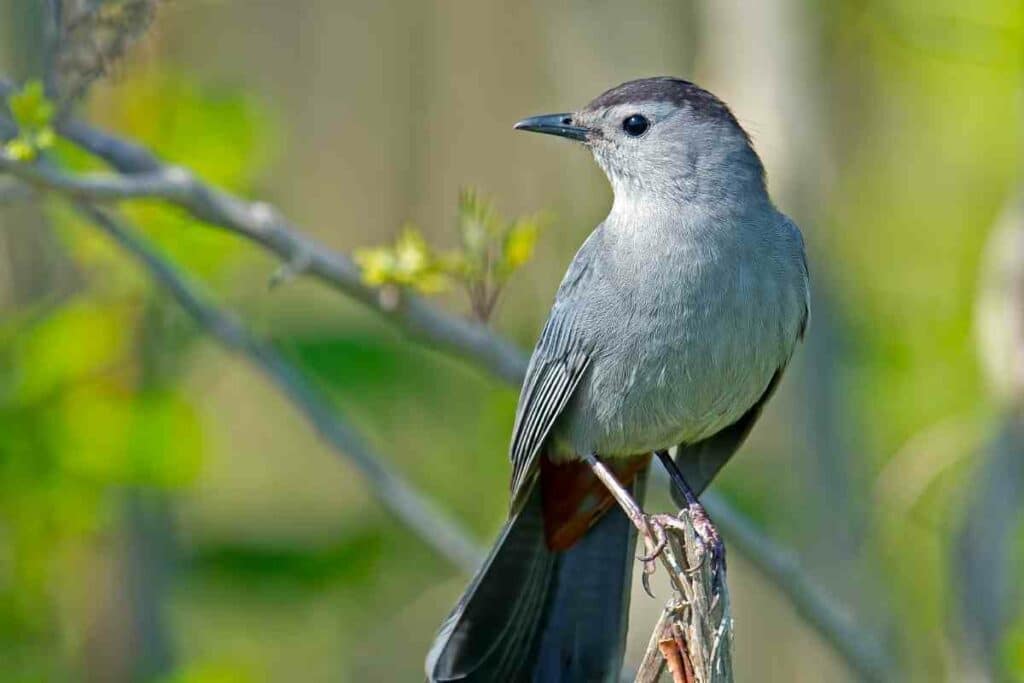
They feed on insects, spiders, larvae, different types of berries, and small fruits.
This means that their chances of encountering spotted Lanternflies are high.
Just Like Chickens: The catbirds use their beaks to capture the Lanternflies. The birds consume both adult and nymph Lanternflies. When they find the nymphs, they can finish a whole group on a tree.
Yellow Jackets
In China and other Asian countries, wasps are the native predators of the Spotted Lanternflies.
The particular species, however, are not found in the U.S.
In the U.S., yellowjackets are the wasps found to prey on the Lanternflies. Yellowjackets are predatory social wasps that have potent stings.
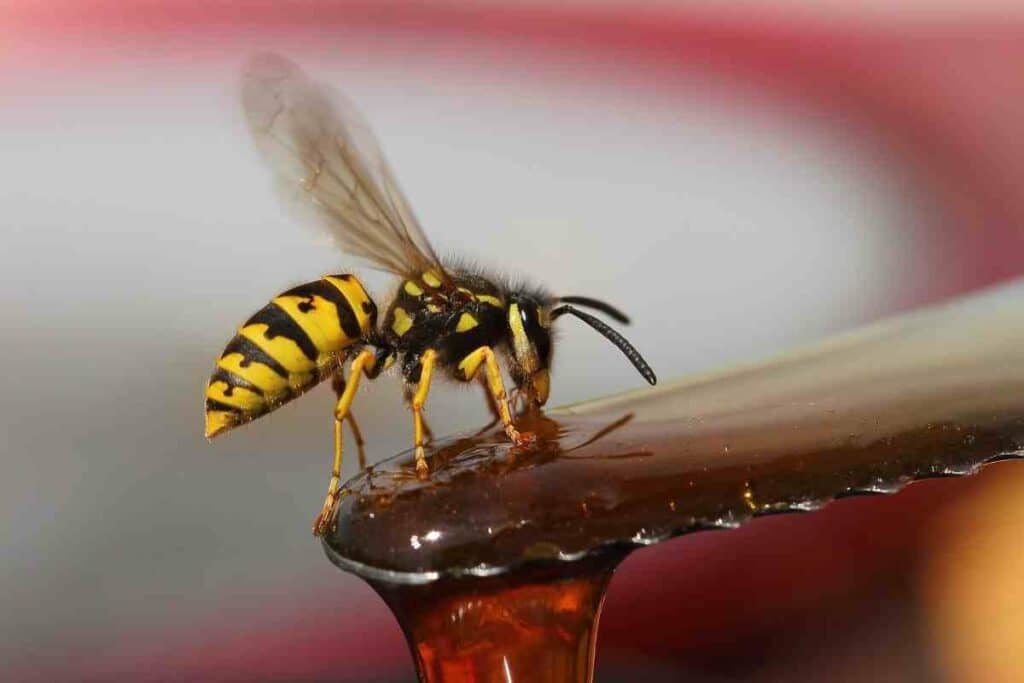
They are typically smaller than other wasps but are more aggressive.
You can find yellow jackets in their colonies between walls or hollow logs. They are attracted to sweet things, which include fruits and nectar.
They also like sap from leaves. Apart from that, they also feed on caterpillars, small insects, and grubs.
Yellowjackets prey on the spotted Lanternflies by stinging them with venom. The venom instantly immobilizes the Lanternfly.
The yellowjacket then feeds on the Lanternfly using its mandibles. Hornets, also a wasp, have been spotted feeding on spotted lanternflies.
Koi Fish
Koi fish are ornamental fish that you can find in outdoor ponds and water gardens.
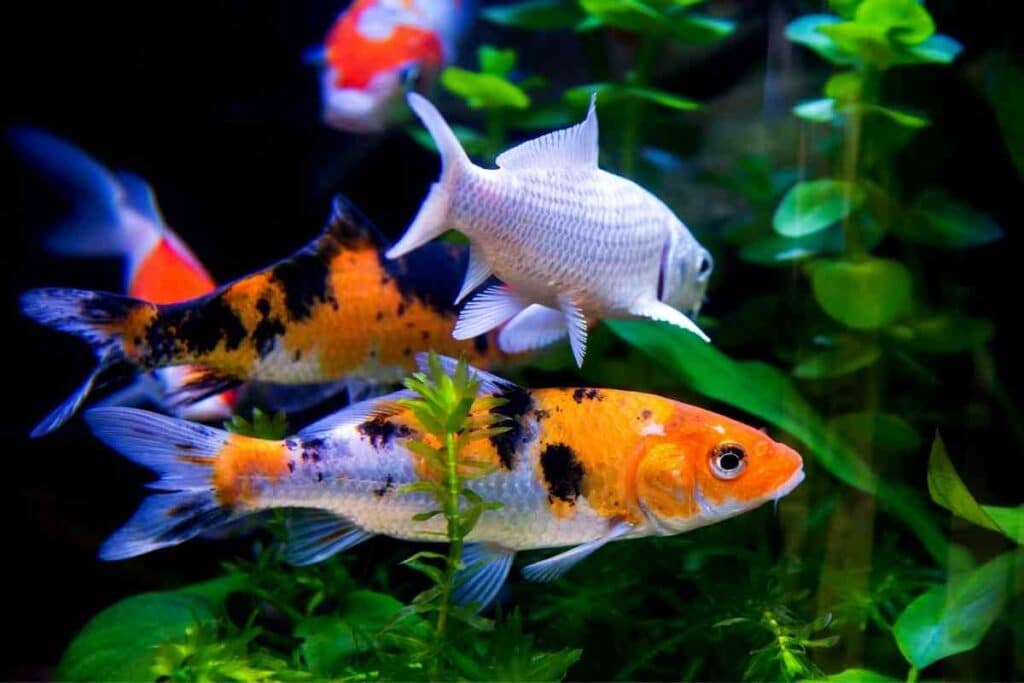
They are large fish that can grow up to two or three feet in length.
Koi fish are omnivores which means they can comfortably eat rice and shrimp.
Hence, when a Spotted Lanternfly accidentally enters the pond, the Koi fish devours them.
Green Tree Frogs
Green tree frogs are carnivores that feed on insects and other animals.
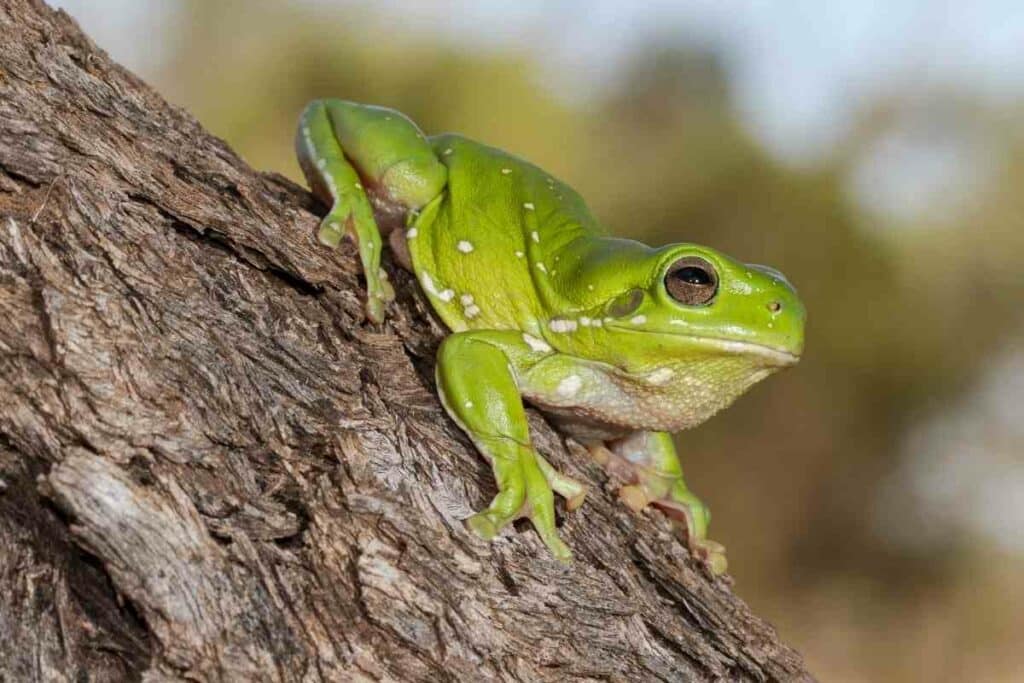
Their prey includes:
- locusts
- crickets
- moths
- spiders
- lizards
- snails
- and many more
These frogs also like feeding on Spotted Lanternflies.
Wrapping Up
Since the arrival of the Spotted Lanternflies in the U.S, the above predators have discovered them and captured them.
And while they are contributing to the control of the Lanternflies, they are still not able to capture a significant amount.
Entomologists and arborists are still looking for the best way to eliminate the planthoppers.
So while you may depend on the predators to feed on the Spotted Lanternflies, it is best to try other measures.
You can do things like stomping them, capturing them in bottles, and them with tape around the tree. You can also report to the authorities in your area to get professional help.
